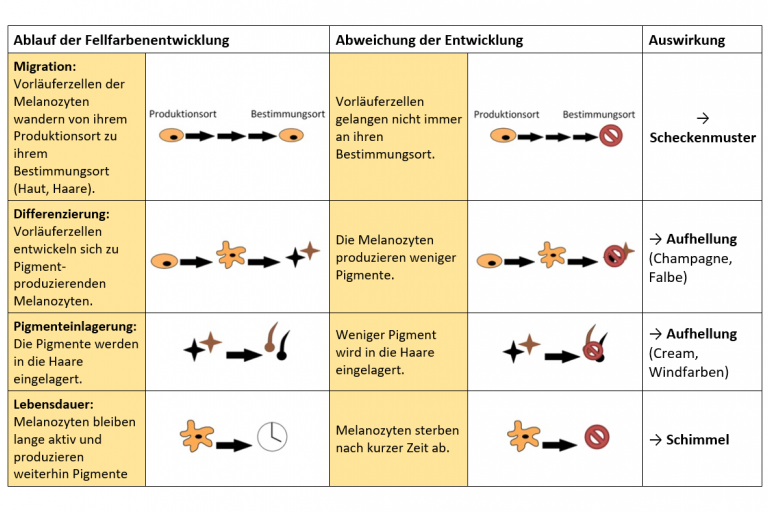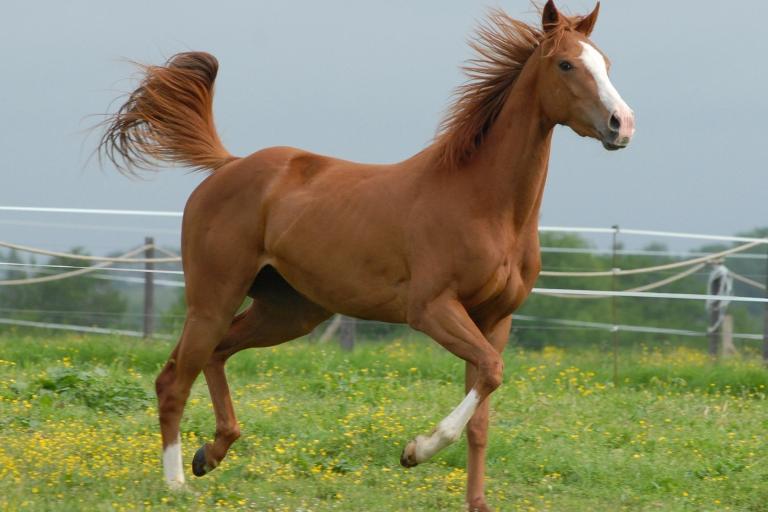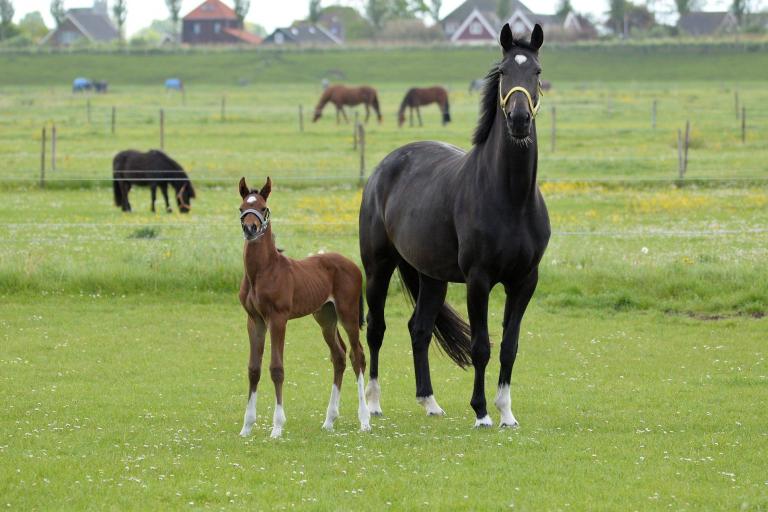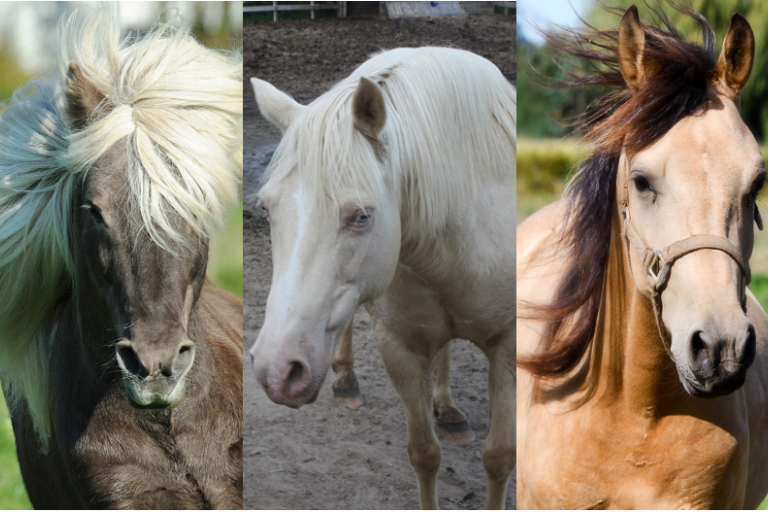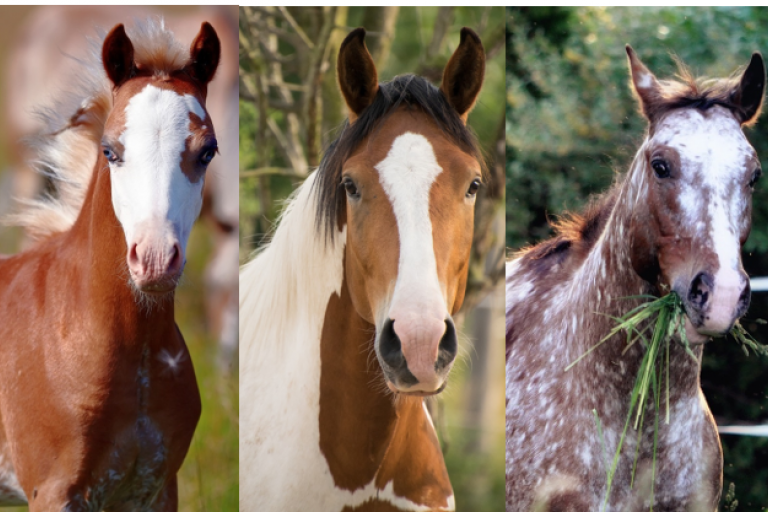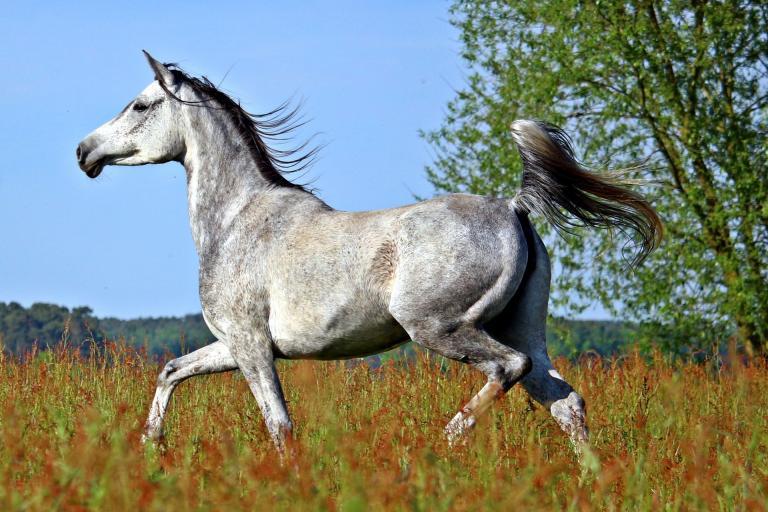Coat colours Horse
Origin of the colours
Which coat colour a horse will show is already defined during embryogenesis. Instructions are coded within a horse’s genome. Coat colours are determined by many different genes which influence each other. To this point, mutations in 11 different genes are known to influence a horse’s coat colour. These genes are active in different developmental stages of the embryo development and are responsible for several defined tasks. Changes within these stages or tasks result in different coat colours and patterns.
Base Colours: Chestnut, Bay and Black
Melanocytes produce two different pigments: Eumelanin (black pigment) and Pheomelanin (red pigment). The amount and ratio of pigments stored in the hair determines the coat colour and shade. Production and transportation of pigments are regulated by two genes: The Extension gene (E) and the Agouti gene (A).
The Extension gene (E) codes for the production of the black pigment Eumelanin. At least one allele needs to be functional (EE or Ee). If both alleles are non-functional (ee), melanocytes are not able to produce the black pigment. In this case the horse will display the base colour “Red“ (Chestnut/Sorrel).
The Agouti gene (A) is responsible for transportation of the black pigment Eumelanin. In "bay" horses the Agouti gene is always functional (AA, Aa). It restricts the Eumelanin to mane, tail, head, ears and limbs. If both copies of the gene are inactive (aa), the black pigment is evenly distributed throughout the entire coat and the horse is "black".
Variations beyond Base Colours
These three base colours are modified by several different factors.
Many aspects of coat colour in horses are still not entirely understood. For example, genetic factors influencing shading (seal brown, sooty, pangare), are still unclear. Environmental factors may also influence phenotype and coat colour.
Dilution factors:
In this case, the melanocytes produce less pigment or less pigment is stored in the hair.
These include, for example, the colours: Champagne, Cream, Mushroom, Pearl, Silver.
A special case is the colour Dun:
Dun is the original coat colour of all horses ("wild type") and is a dilution of the base colour in combination with primitive markings due to less production of pigments. The non-diluted, bright basic colours originated from a mutation in the dun gene.
White Patterns:
Here there are changes in the migration of the precursor cells of the melanocytes to their destination. These do not reach their destination (skin/hair) or only partially. On parts of the body where they do not reach, the skin is pink/light and the coat white.
These include, for example, the patterns: Leopard-Spotting & PATN1, Frame Overo, Splashed White and the mutations of the KIT gene with the patterns Tobiano, Sabino and White Spotting.
Here, the melanocytes have a reduced life span and gradually die off. The horse is born with coloured coat of any basic colour and first turns grey and later white, because new hairs no longer contain pigment due to the loss of melanocytes.
Genetische Farbtests und Farbbestimmung für Pferde
Bestellen Sie genetische Farbtests für Ihr Pferd. Besonders bei der Zucht spielen Fellfarbe und Fellmuster bei Pferden eine wichtige Rolle. Sie verleihen der Rasse oder einem Typ Pferd ihr charakteristisches Aussehen. Mit unseren DNA Farbtests und der Farbbestimmung für Pferde ist es möglich Genvarianten nachzuweisen, die verschiedene Merkmale wie Fellfarbe und Fellmuster beeinflussen. Durch die Auswahl der Zuchttiere können Sie unerwünschte äußere Merkmale unterbinden oder die Entstehung gewisser Fellfarben fördern.
Jetzt DNA Farbtests für Pferde und Tests zur Farbbestimmung Pferd bestellen: Hier bestellen

